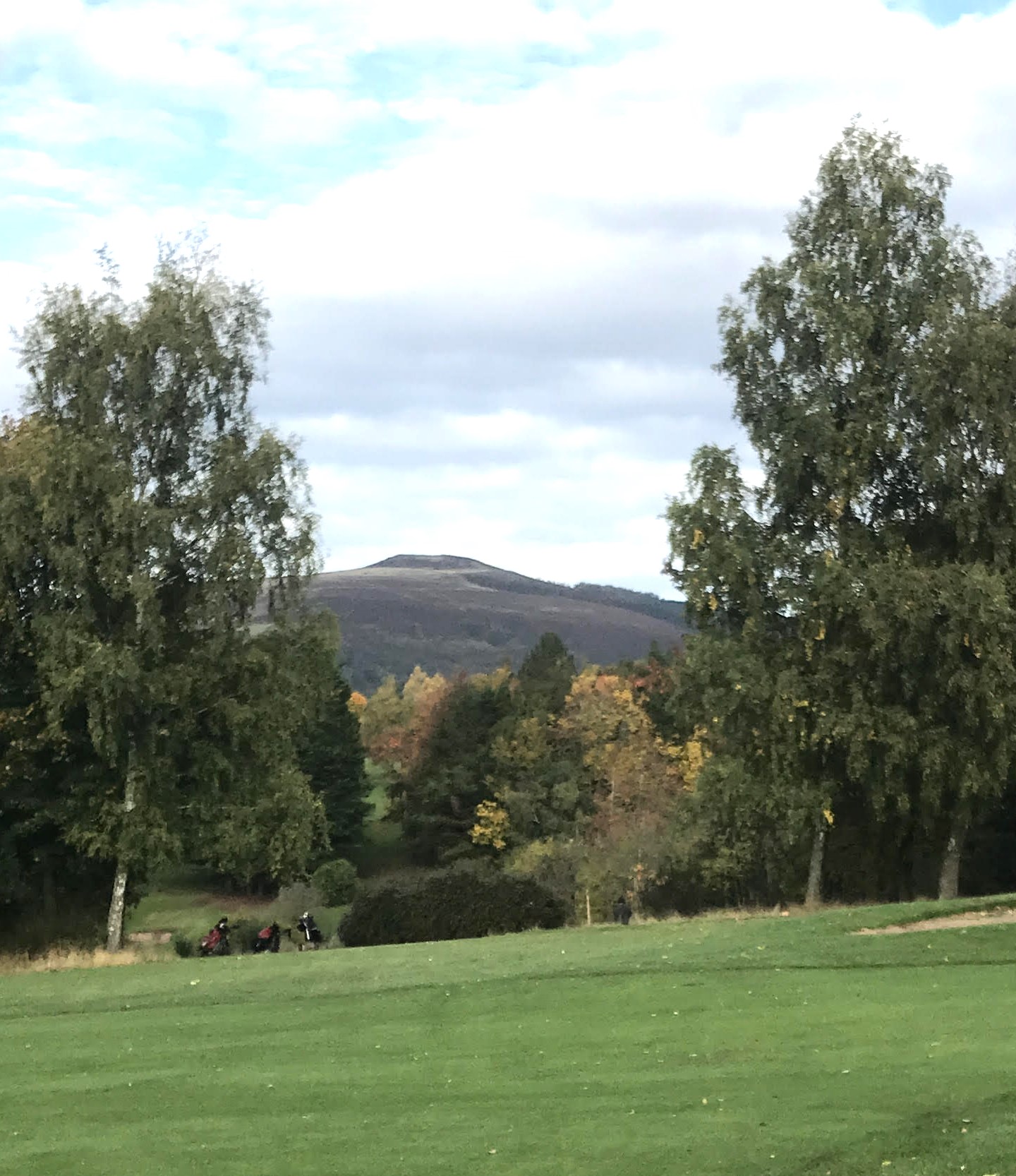Sickleholme Nature Notes
And so to October, and another autumn. By mid-month the colours were at their best and a little sunshine enhanced the rich golds and reds in the foliage of trees and shrubs. It is also a good month to enjoy the views looking away from the course, as in the “purple headed mountain” look of this month’s photo image, which was taken with Ewen MacKinnon’s mobile from the 8th tee.
Another traditional autumn sight was the huge fall of Horse Chestnut fruits (to older members, that can only mean Conkers) to the right of the second green. One ball seen finishing there sat nicely on a pile of the spiky covers; almost demanding a referee’s arbitration!
Overhead, more Pink-footed Geese were seen and heard heading eastwards, up to three Buzzards were seen at times, and there were more Red Kite sightings. The latter is particularly satisfying when we recall that by the late 1980’s the species was on the verge of being lost to Britain, with just a few breeding pairs left in central Wales. The reintroduction programme started in the Chilterns in 1990, has been hugely successful, and we may now be close to our first breeding attempt at Sickleholme.
On the course, Jays were heard even more frequently than being seen and the clubhouse feeders continue to attract House Sparrows, and other species, at a time when this once common bird has declined worryingly in parts of the county and country.
Fungi are now found easily in most parts of the course and play their part in feeding small creatures, and some birds, as is evidenced by the nibbled edges of many. I have manged to identify Fly Agaric, Shaggy Ink-Cap, Clustered Brittlestems, and what I believe is Dryad’s Saddle, but there are many more. November should be peak fungi month so if you can add any other names, or wish to send me photos, then please do so. We can learn as we go along!
Bryan Barnacle


